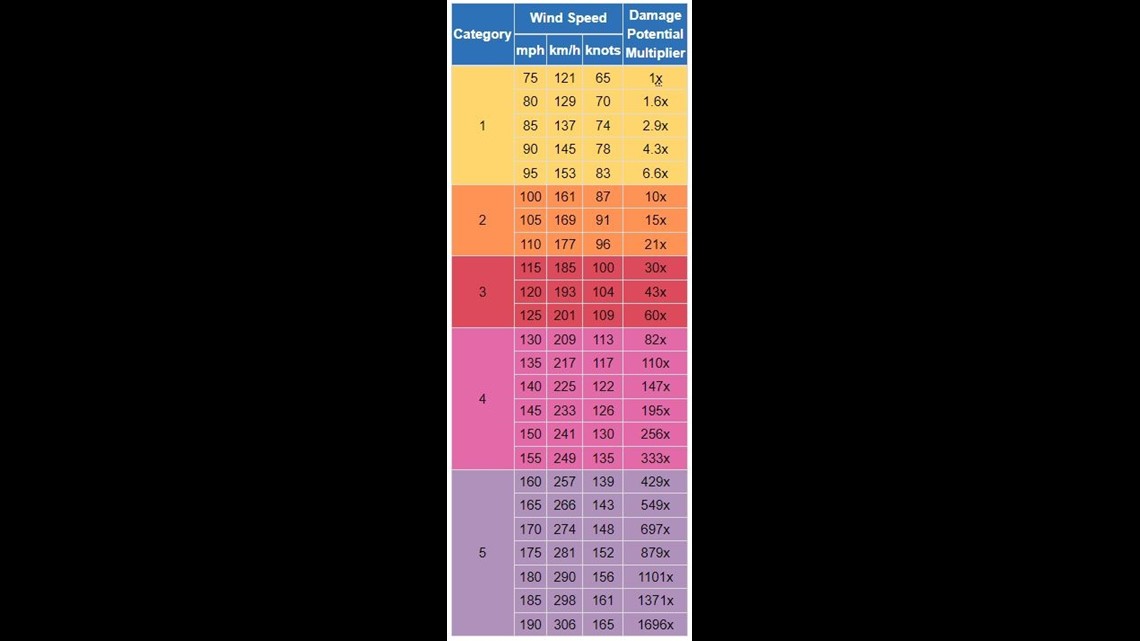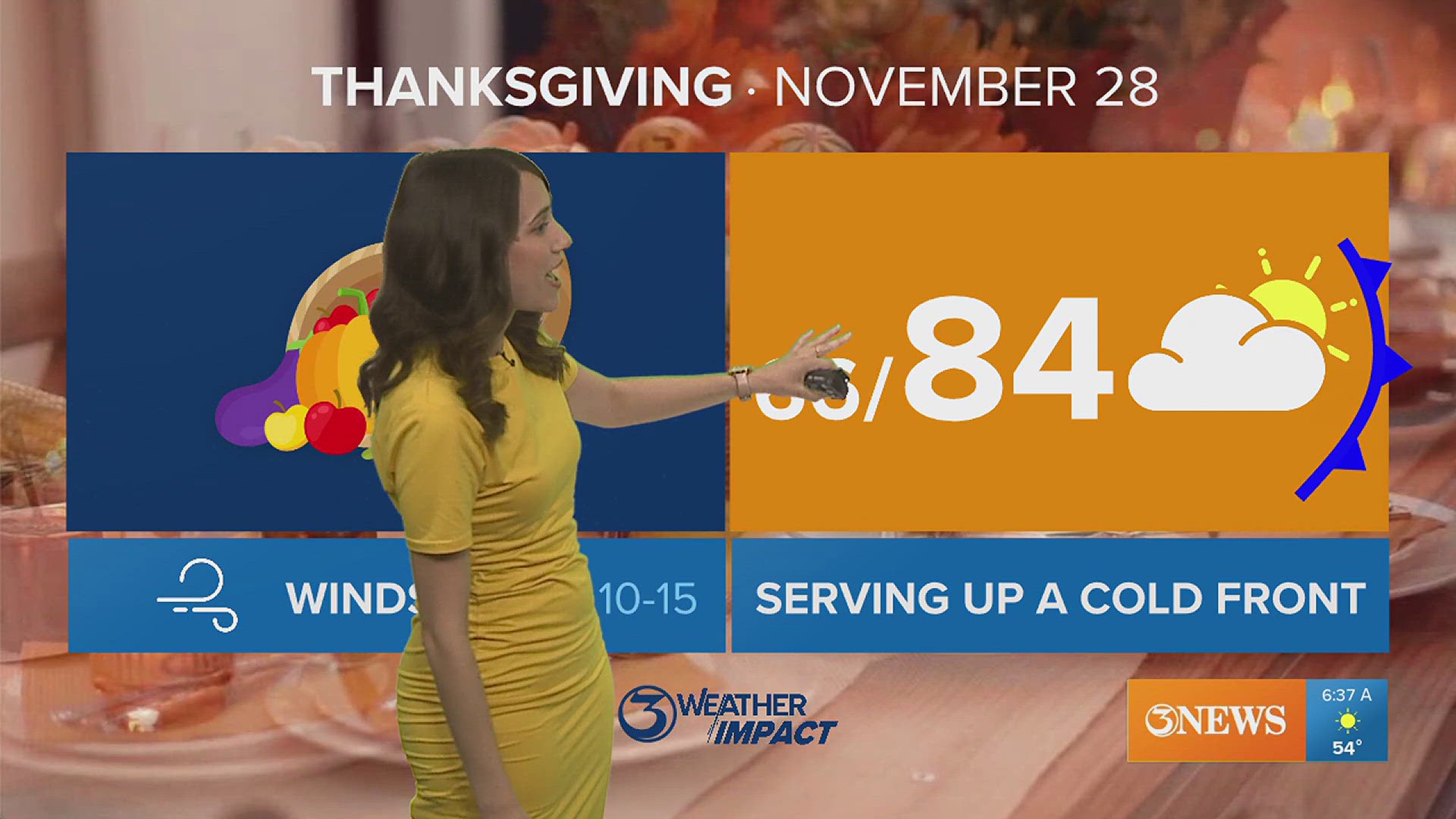The Saffir-Simpson Wind Scale
The Saffir-Simpson Wind Scale categorizes hurricanes' strength by their wind speed on a scale of Category 1 to Category 5. The scale provides examples of the potential damage and impacts a storm with specific wind speeds is capable of.
The maximum sustained surface wind speed is what's used to determine a hurricane's category. This maximum speed is calculated by using the peak 1-minute sustained wind at 10 m (33 ft) above ground.


Potential Damage Multiplier
Most people would assume that the potential damage from one category to the next (i.e., Category 1 to 2, 2 to 3, etc.) is linear. In other words, the intensity of the hurricane increases the same amount each time. However, that's not the case.
The potential damage increase from category to category is actually logarithmic. This means that seemingly small increases in wind can drastically increase the amount of damage.


When hurricane-related damages are normalized, it shows an eighth-power increase in damage from category to category.
For example: doubling the wind speed from a 75 mph Category 1 to a 150 mph Category 4 doesn't constitute a doubling or quadrupling in hurricane intensity. It is actually a 2^8 increase, or 256 times stronger.
The scale below is based on damage done by a 75 mph Category 1, meaning the Damage Potential Multiplier is that many times times stronger than the 75 mph hurricane. Note the rapid increase in damage potential within each category.


The Saffir-Simpson Wind Scale does not take into account other hazards like storm surge, flooding, and tornadoes. The rate of increase in potential damage is even higher when these factors are accounted for.
So the next time you hear a hurricane had a small wind increase keep in mind that that small increase leads directly to a greater damage potential.



